In the P - V diagram, I is the initial state and F is the final state. The gas goes from I to F by
(i) IAF, (ii) IBF and (iii) ICF.
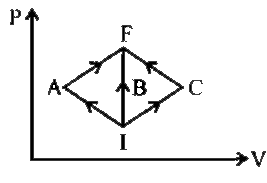
The heat absorbed by the gas is
the same in all the three processes
the same in (i) and (ii)
more in (i) than in (ii)
the same in (ii) and (iii)
The correct Answer is:C
For a thermodynamic process, dQ = dU + dW
In this case for all three processes initial and final states are the same.
∴ dU is the same for all.
∴ dQ will depend upon dW.
Let dW1,dW2anddW3 be the works done in (i), (ii) and (iii) then dW1 is +ve.
∴dW2 = 0 as it is an isochoric process as volume is constant and dW2 = PdV = 0.
dW3 is positive and dW1=dW3 ∴dQ1>dQ2
Topper's Solved these Questions
- BOOK - MARVEL PUBLICATIONCHAPTER - KINETIC THEORY OF GASES ,THERMODYNAMICS AND RADIATIONEXERCISE - TEST YOUR GRASP - 930videos
KINETIC THEORY OF GASES ,THERMODYNAMICS AND RADIATION
- BOOK - MARVEL PUBLICATIONCHAPTER - INTERFERENCE AND DIFFRACTIONEXERCISE - TEST YOUR GRASP20videos
INTERFERENCE AND DIFFRACTION
- BOOK - MARVEL PUBLICATIONCHAPTER - MAGNETIC EFFECTS OF ELECTRIC CURRENTEXERCISE - MCQ195videos
MAGNETIC EFFECTS OF ELECTRIC CURRENT
Similar Questions
When a thermodynamic system is taken from an initial state I to a final state F along the path IAF, as shown in Fig. the heat energy absorbed by the system is Q=55J and work done by the system is W=25J. If the same system is taken along the path IBF, the value of Q=35J.
(a) If W=−15J for the curved path FI, how much heat energy is lost by the system along this path ?
(b) If U1=10J, what is UF ?
(d) If UB=20J, what is Q for the process BF and IB ?View SolutionSix grams of hydrogen gas at a temperature of 273 K isothoermally expanded to five times its initial volume and then isochorically heated so that the pressure in the final state becomes equal to that in the initial state. Find the total amount of heat absorbed by the gas during the entire process.
View Solution
Knowledge Check
- Question 1 - Select One
One mole of an ideal gas is taken from state A to state B by three different processes (a) ACB, (b) ADB and (c ) AEB as shown in the P−V diagram. The heat absorbed by the gas is
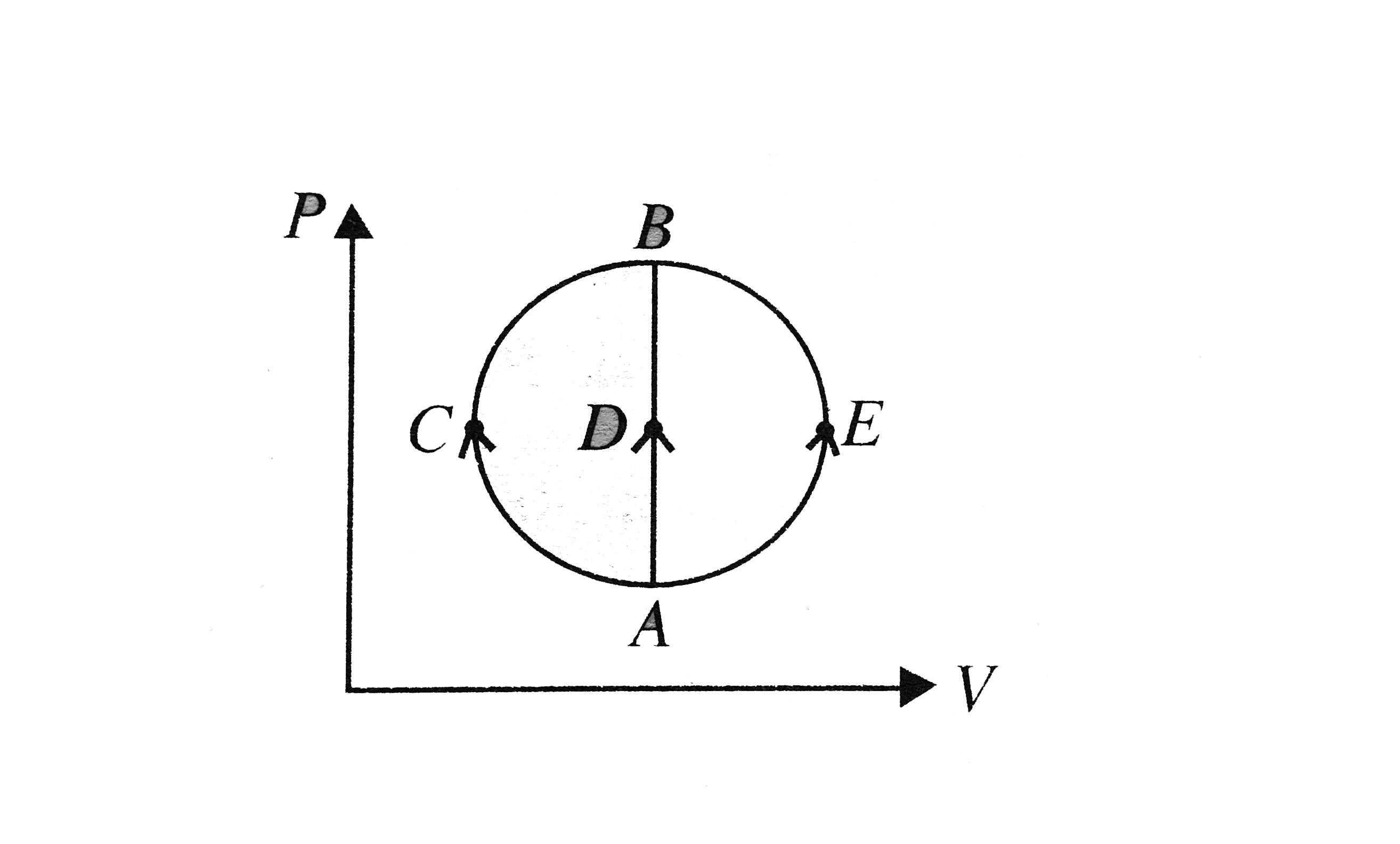 Agreater in process (ii) than in (i)Bthe least in process (ii)Cthe same in (i) and (iii)Dless in (iii) than in (ii)
Agreater in process (ii) than in (i)Bthe least in process (ii)Cthe same in (i) and (iii)Dless in (iii) than in (ii) - Question 2 - Select One
One mole of an ideal gas is taken from state A to state B by three different processes (a) ACB, (b) ADB and (c ) AEB as shown in the P−V diagram. The heat absorbed by the gas is
 Agreater in process (b) than in (a)Bthe least in process (b)Cthe same in (a) and (c )Dless in (c ) than in (b)
Agreater in process (b) than in (a)Bthe least in process (b)Cthe same in (a) and (c )Dless in (c ) than in (b) - Question 3 - Select One
An ideal gas of mass m in a state A goes to another state B via three different processes as shown in Fig. If Q1,Q2 and Q3 denote the heat absorbed by the gas along the three paths, then
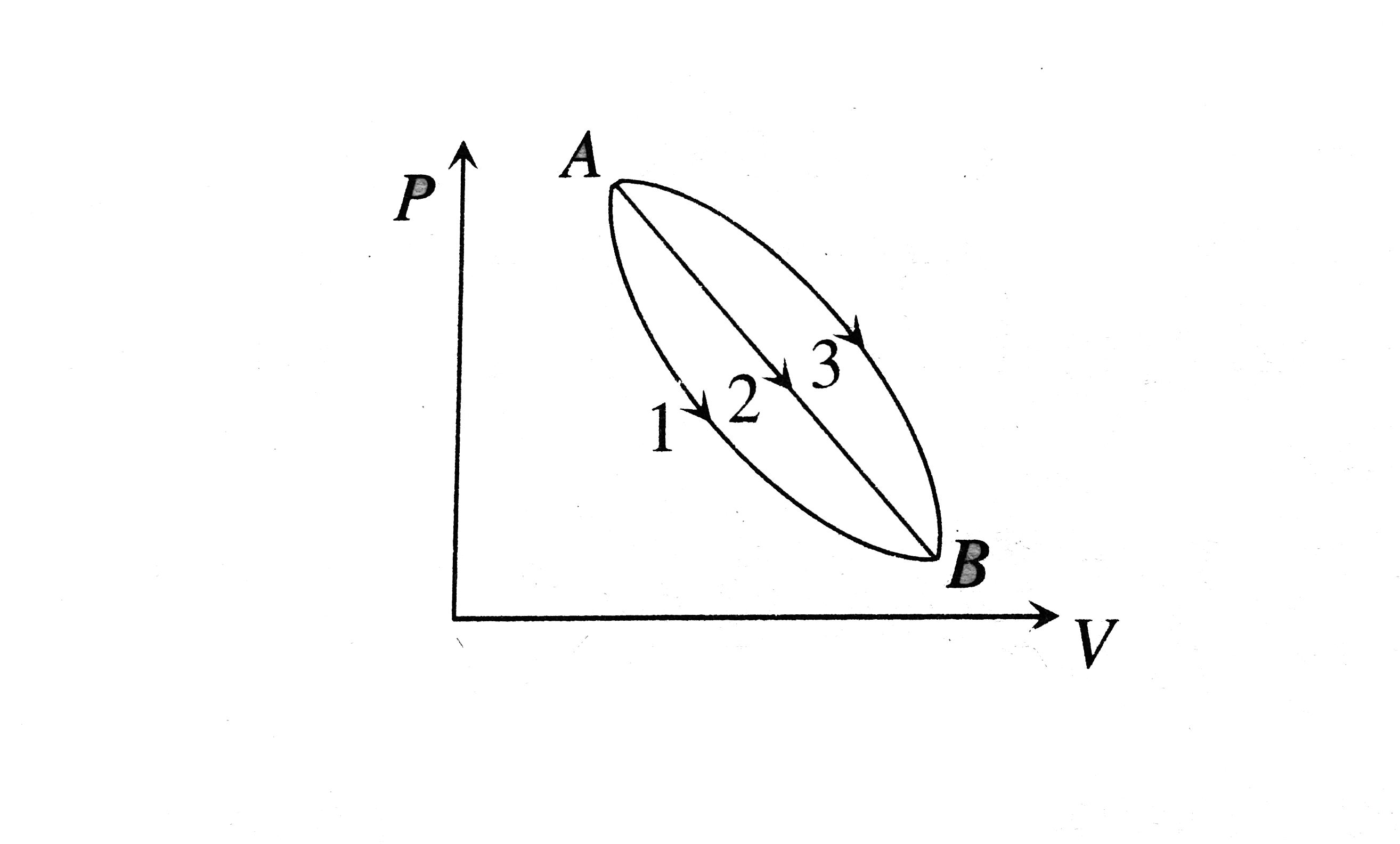 AQ1<Q2<Q3BQ1<Q2=Q3CQ1=Q2>Q3DQ1>Q2>Q3
AQ1<Q2<Q3BQ1<Q2=Q3CQ1=Q2>Q3DQ1>Q2>Q3
An ideal gas undergoes a four step cycle as shown in the P-V diagram below. During this cycle heat is absorbed by the gas in
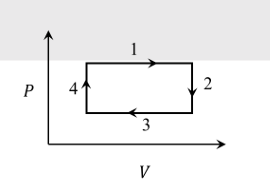 View Solution
View SolutionAn ideal gas goes from State A to state B via three different process as indicate in the P−V diagram.
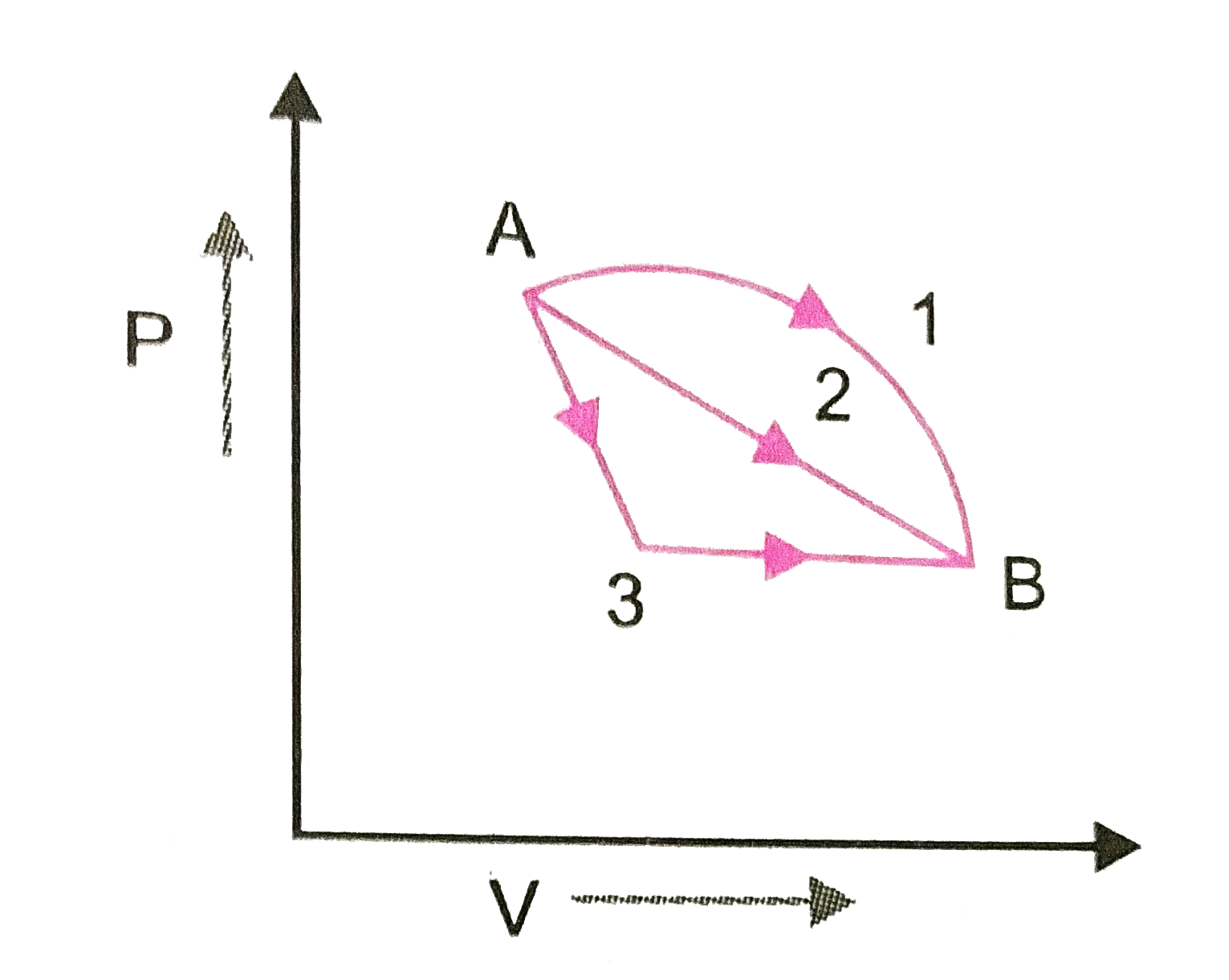
If Q2,Q3 indicates the heat absorbed by the gas along the three processes and ΔU1,ΔU2,ΔU3 indicates the change in internal energy along the three processes respectively, thenView SolutionFigure shows the p−V diagram of an ideal gas undergoing a change of state from A to B. Four different parts I, II, III and IV as shown in the figure may lead to the same change of state. ltBrgt
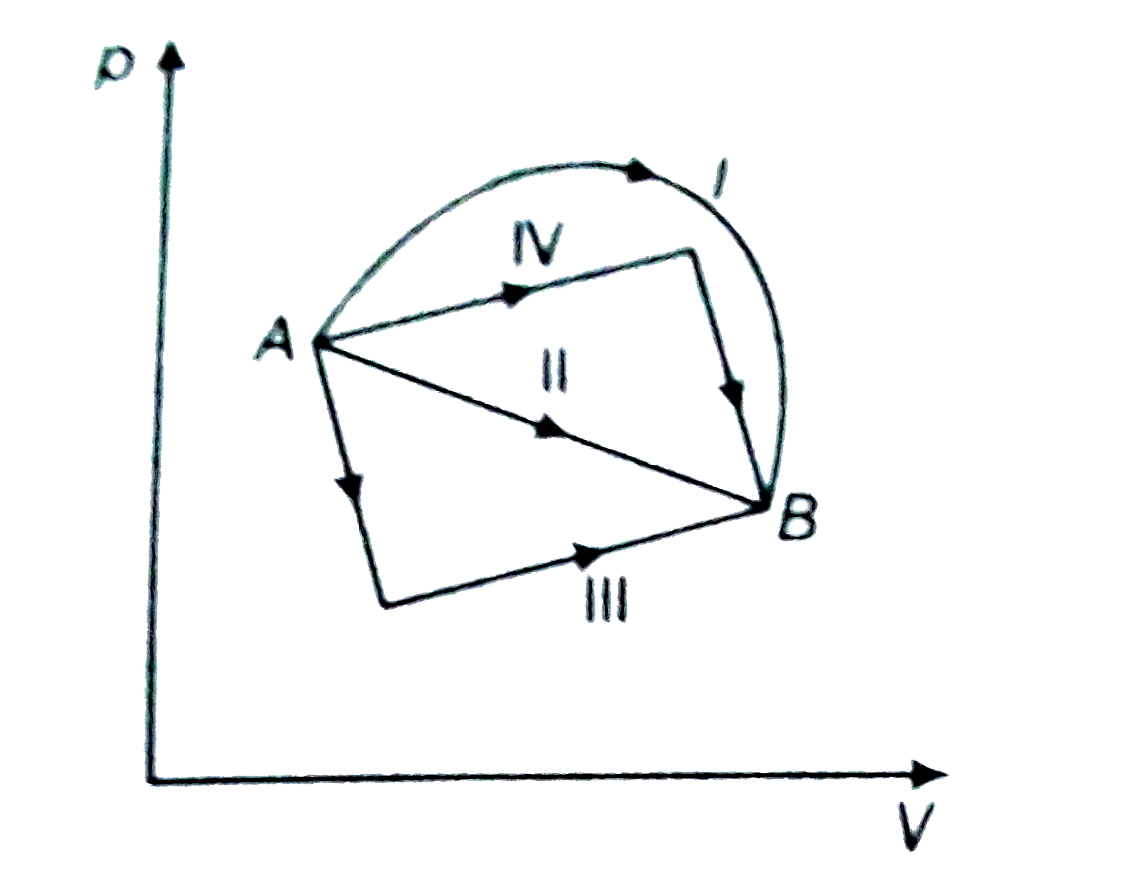 View Solution
View SolutionA thermodynamic system goes from states (i) P1V to 2P1 , V (ii) P , V to P , 2 V . Then work done in the two cases is
View SolutionAn ideal gas goes from the state i to the state ∫ as shown in .the work done by the gas during the process
 View Solution
View Solution

